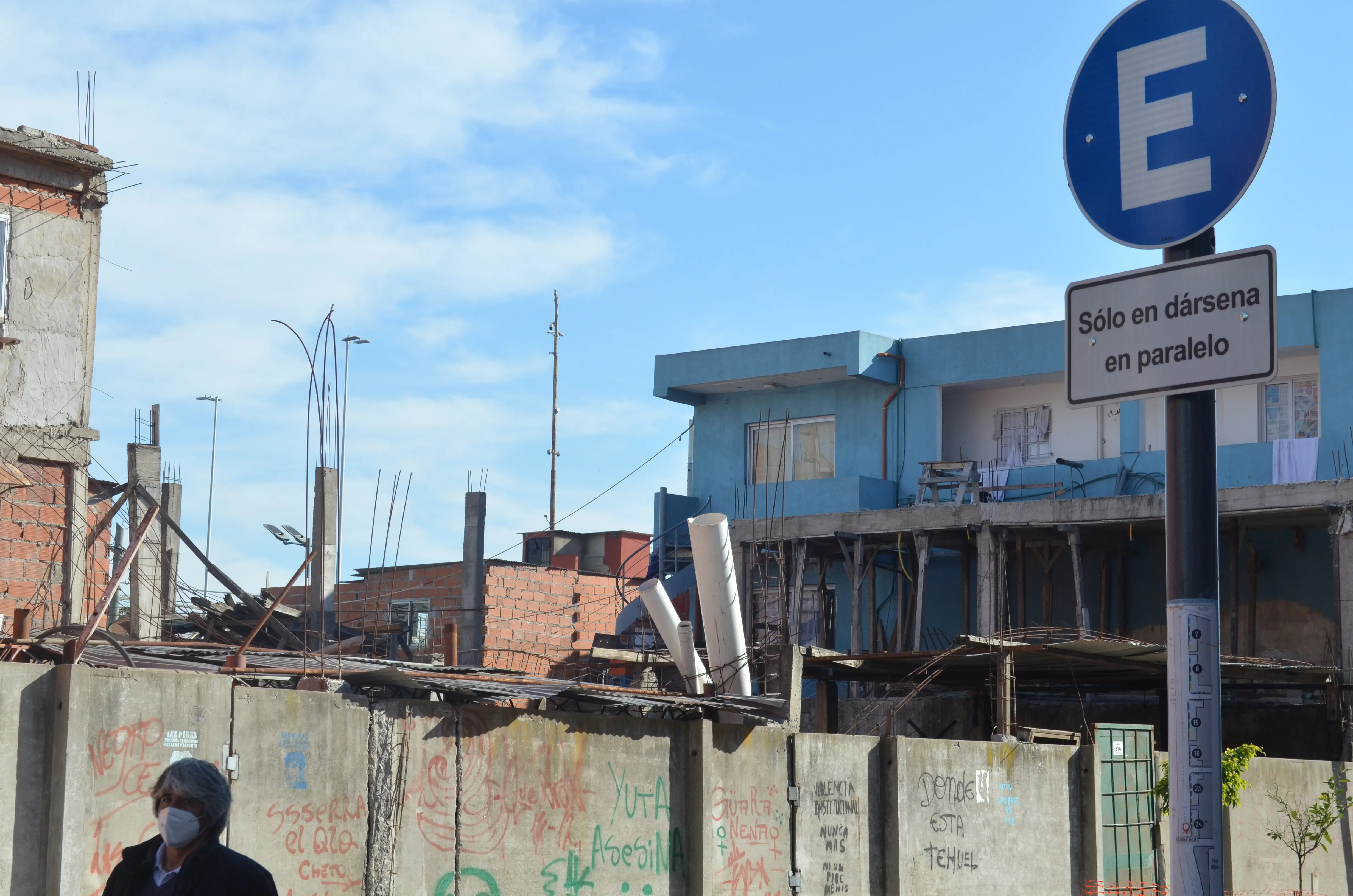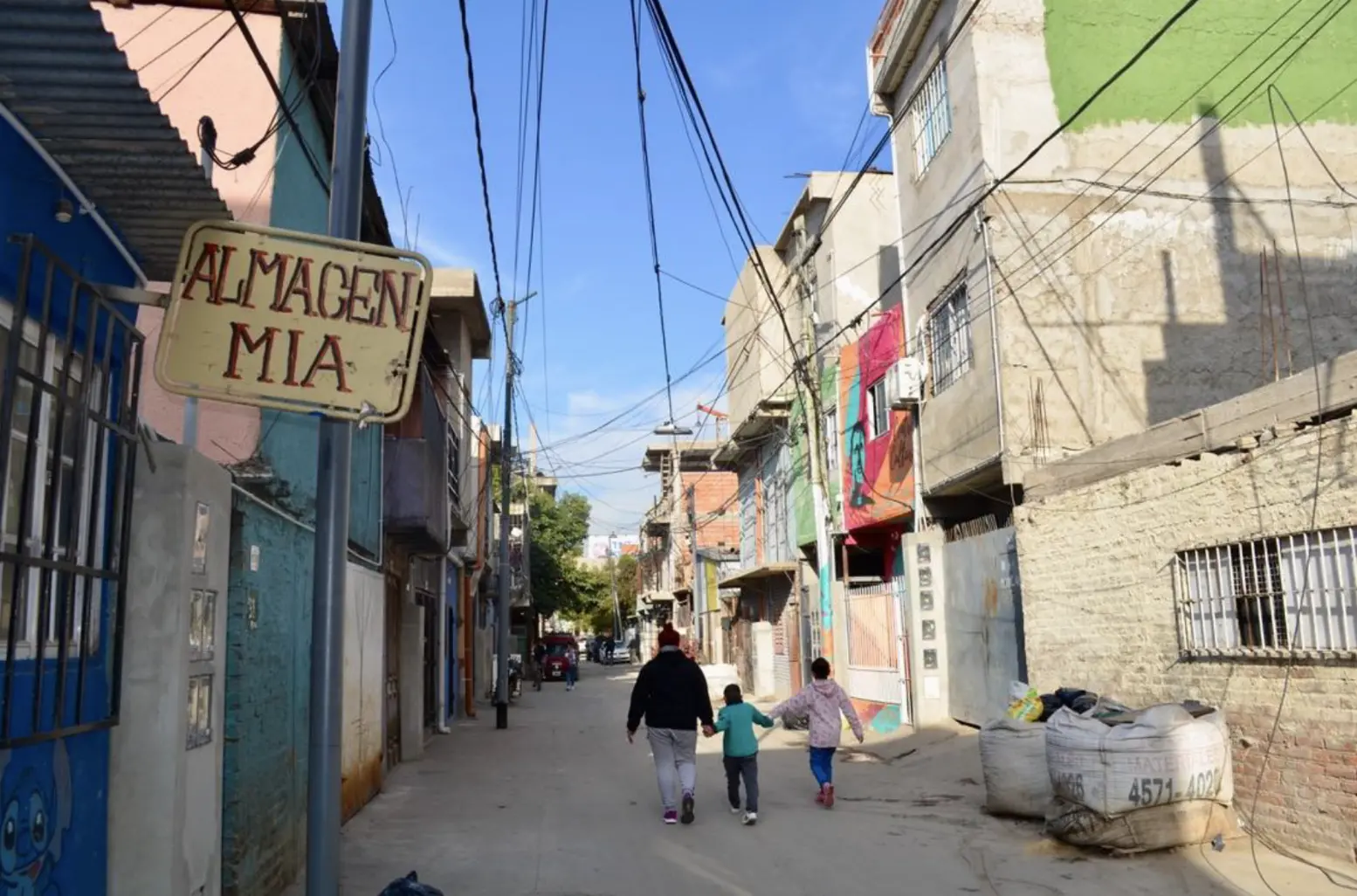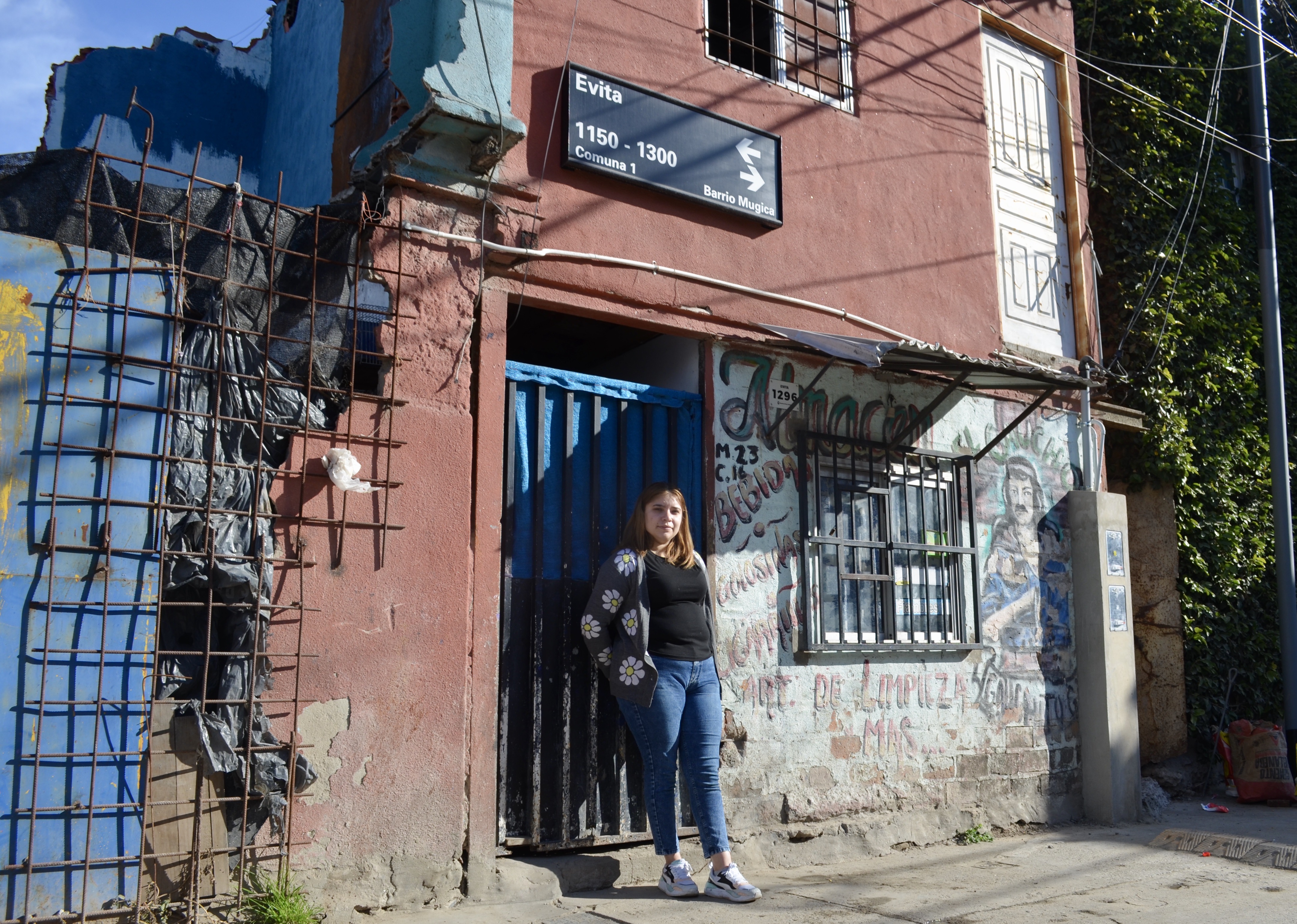
Upon arriving at Buenos Aires’ infamous Retiro train station while reporting on the pandemic’s impact on public education in Argentina, I meet 20-year-old Yasmin Maccio, a resident of Buenos Aires’ Barrio Mugica, formerly known as Villa 31, in person for the first time. We had agreed on 1:00pm, but she turns up a few minutes early, eager to show me around her neighborhood.
“Welcome,” she says warmly.
Yasmin—who lives in a household of 11—originally agreed to speak with me about the barriers she and her family faced in regularly accessing school work in the virtual learning environment throughout the pandemic, as the financial and public health crises raged on in her community and other barrios populares, or “popular neighborhoods,” throughout the region.
As we walk through the streets, I am able to see the division between tourists and locals in real time. On one side of the train tracks, Retiro boasts cafes adorned with paintings on their walls, gift shops, and cozy-looking apartments marketed towards urban professionals.
Upon entering the barrio, I realize that the opposing side of the tracks tells a different story. As we continue with our walk, I notice the electrical wiring hanging above our heads with each passing unpaved alleyway that we continue through. Yasmin tells me that life in the barrio, for its 40,000 residents, varies greatly—but most families lack a computer, many are limited in ownership of several cell phones, and some lack running water.
Yet the comparative quiet and stillness of Retiro seems to directly contrast the element of community which seemed to light up the barrio. On our walk from the train station to Yasmin’s house, we walk past the park, where the slides and jungle gym are filled with children passing the time together on their winter holiday. Yasmin offers greetings to friends, former classmates, and family acquaintances as we cut through several markets, where I watch residents ponder over grocery purchases.

Colorful flyers for Apoyo Escolar, pinned to the side of buildings throughout the neighborhood, serve as a reminder of a resource that many families leaned on throughout the pandemic to help their children navigate through the digital learning divide, as many children lacked computers or regular access to mobile devices to receive their assignments. (I learn later that Yasmin’s family is among the many who utilize the programming these supplementary educational programs provide.)
Upon arriving at Yasmin’s family home, her dog leaps onto my lap and I sit down in her family room. The house is empty, she explains, as her parents, siblings, nieces, and nephews are away visiting family. Yet I am focused on the collection of portraits and family pictures that fill the walls—some featuring the smiling faces of her young nieces and nephews—many of which Yasmin had taken herself.
I wait patiently in her kitchen until she retrieves a folder containing years’ worth of her print work, along with her sizable collection of awards and other prints recognizing certain photos or photo projects she produced throughout her time in high school and beyond.
She tells me that her love of photography developed thanks to after-school seminars provided by community-centric programs like Apoyo Escolar, and other local offerings which hold free classes for kids in the neighborhood varying by interest, from academics to arts to athletics.
But she does not have to explain to me what she is drawn to photograph. As she spreads her prints across the dining room table, there are photos of her young nieces and nephews, protesters gathering on behalf of her community, and strangers taking walks in the barrio. Her love of her family and community—and further, her tendency to capture shared moments with them on camera—ultimately speaks for itself.

Even though she has since graduated from secondary school, several of her nieces and nephews have not—with the youngest being just 11 months old.
We discuss how local public schools, overwhelmed by the added challenges of the pandemic, were woefully unprepared to help students deal with the transition to digital learning. Given this, it is clear that community support meant the world—from family, friends, volunteers at Apoyo Escolar, and otherwise.
Yasmin is well aware of this. She now volunteers on her own in the photography classes that she came to love all those years ago, and she hopes to provide a similar experience to all of the children in the barrio to develop their skill sets in the arts.











